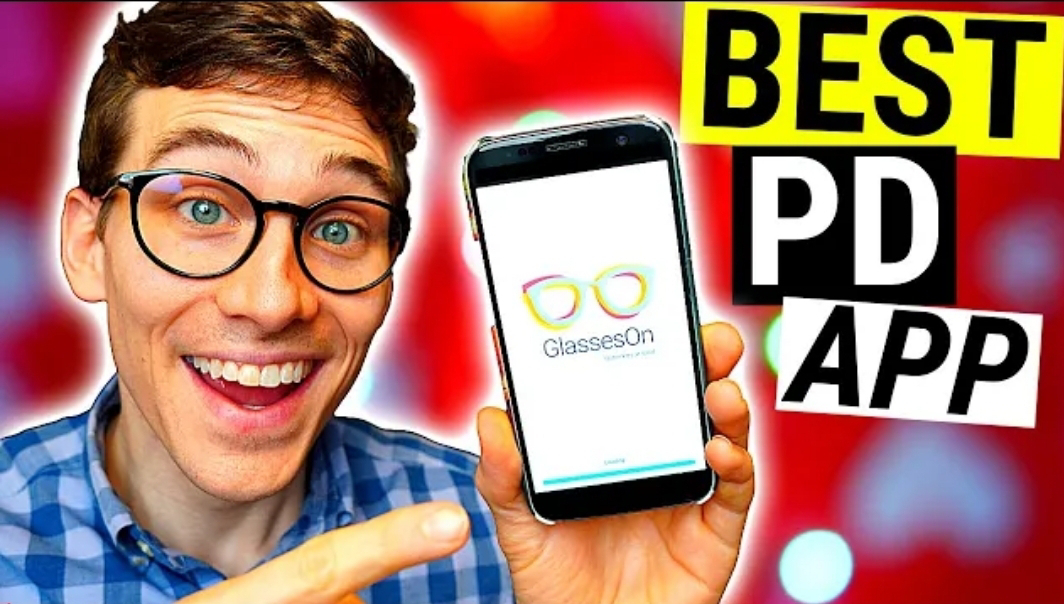How to Measure Your Pupillary Distance at Home Using a Free App
When ordering glasses, one of the most crucial steps is ensuring you have an accurate pupillary distance (PD). This measurement is essential for creating glasses that are both comfortable and effective. In this guide, I’ll show you how to measure your PD at home using a free and simple app on your phone.
Why Pupillary Distance Matters
Your pupillary distance is the space between the center of your right pupil and the center of your left pupil. It’s a critical measurement because it tells the optician or lens maker where the optical center of your lenses should be placed within your frames. If your PD is off, you might experience blurred vision, distorted images, eye strain, headaches, or even motion sickness.
Traditional vs. App-Based Measurement
While you could try the classic method of measuring your PD with a ruler and a mirror, it’s tricky to get it right. Instead, I recommend using a reliable app. One of the best free apps I’ve found is called GlassesOn. Not only is it easy to use, but it’s also highly accurate. The app has been clinically tested, meets industry standards, and is approved by both the FDA in the U.S. and CE in Europe.
Step-by-Step Guide to Measuring Your PD with GlassesOn
- Download the App: Start by downloading the GlassesOn app on your phone.
- Prepare for Measurement: You’ll need a standard magnetic card (like a credit card) for scaling, and ensure you have good lighting.
- Remove Your Glasses: If you’re wearing glasses, take them off to avoid interference with the measurement.
- Position the Card: Hold the card against your forehead, gripping it by the top corner so it doesn’t block your face.
- Follow the Instructions: Look directly into the camera, smile, and follow the app’s prompts to take a picture.
- Review the Results: The app will calculate your PD and display the measurement.
I’ve double-checked the app’s measurements using professional instruments at the clinic, and they match up perfectly.
Additional Tips and Considerations
Inter-Pupillary Distance (IPD): The app measures your IPD, which is the distance between your pupils. This is ideal for single-vision or reading glasses.
Adjustments for Reading Glasses: Opticians often subtract about 3mm from your distance PD for reading glasses, since your eyes converge slightly when focusing on close objects.
High Prescriptions or Progressive Lenses: If you have a strong prescription (e.g., +6 or -6 and above) or need progressive bifocals, consider getting a monocular PD. This measures the distance from each pupil to the midline of your nose, accounting for facial asymmetry, which can be crucial for high prescriptions.
While the GlassesOn app is incredibly accurate, for certain cases like high prescriptions or progressive lenses, a manual measurement by a professional may be necessary.
Important Reminder
Please note that while this app is a great tool for measuring your PD, it doesn’t replace a comprehensive eye health examination. Regular check-ups with your eye doctor are essential, even if your vision seems fine. Many eye conditions can develop without noticeable symptoms, so staying proactive with your eye health is key.
Conclusion
Thank you for watching! If you found this guide helpful, please hit the like button and leave a comment below with any questions or suggestions for future videos. If you’re interested in trying out the GlassesOn app, you can find it through the link provided here [insert link]. For more eye care tips and product reviews, be sure to subscribe to our channel and hit the notification bell. Stay tuned, and take care of your eyes!



Comments
Post a Comment